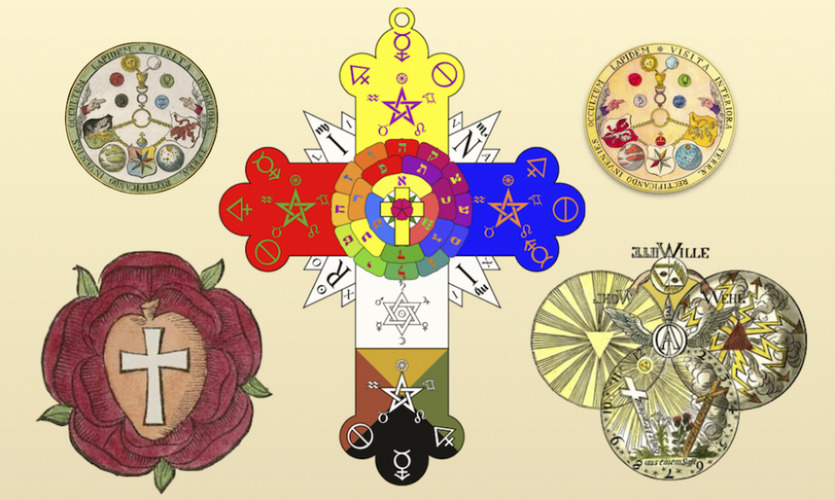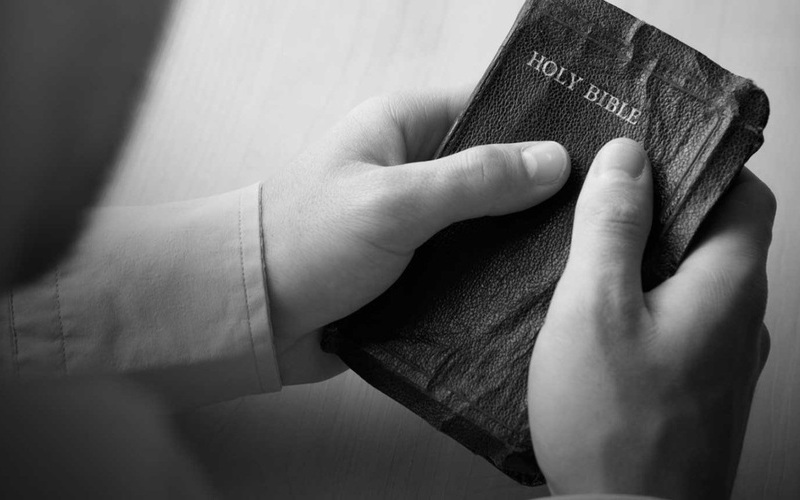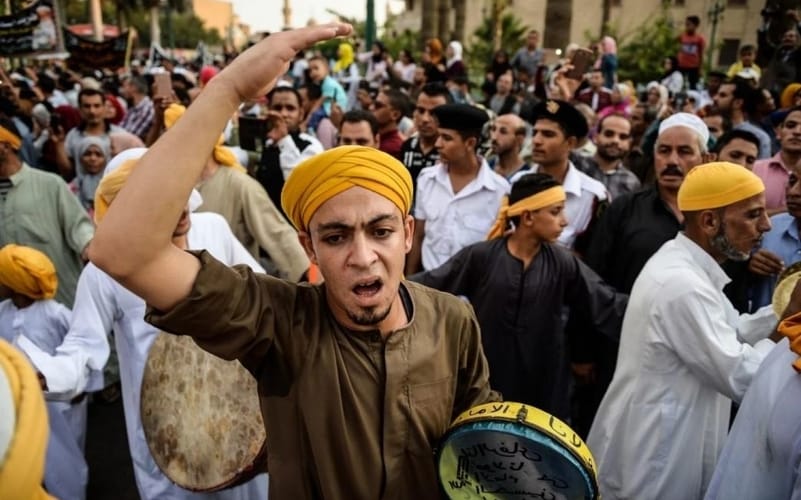Rosicrucianism Meaning and Defining
Rosicrucianism is a spiritual and cultural movement that arose in Europe in the early 17th century after the publication of several texts purported to announce the existence of a hitherto unknown esoteric order to the world and made seeking its knowledge attractive to many. The mysterious doctrine of the order is “built on esoteric truths of the ancient past”, which “concealed from the average man, provide insight into nature, the physical universe, and the spiritual realm.” The manifestos do not elaborate extensively on the matter but combine references to Kabbalah, Hermeticism, alchemy, and Christian mysticism.
Rosicrucian, a member of a worldwide brotherhood claiming to possess esoteric wisdom handed down from ancient times. The name derives from the order’s symbol, a rose on a cross, which is similar to the family coat of arms of Martin Luther.

The Symbol Of Rosicrucianism:
The Rosicrucian Order, AMORC is known internationally by its traditional and authentic title, the Ancient Mystical Order Rosae Crucis, from which is derived the acronym “AMORC.” The Ancient Mystical Order Rosae Crucis is the Latin form of the organization’s name, which translates into the Ancient Mystical Order of the Rose Cross. There is no religious connotation associated with this symbol; the Rose Cross symbol predates Christianity. The cross symbolically represents the human body and the rose represents the individual’s unfolding consciousness.
An example of the rosy cross symbol predating the early Rosicrucian manifestos is that shown on the central panel of the Harbaville Triptych, which is Byzantine and comes from the 10th or 11th century. The symbol is a Calvary cross with a rose in its center, which is identical to what the masonic/Rosicrucian scholar Manly Palmer Hall claimed to be the original symbol of the Rosicrucian.
The History Of Rosicrucianism:
Between 1614 and 1617, three anonymous manifestos were published, first in Germany and later throughout Europe. These were the Fama Fraternitatis RC (The Fame of the Brotherhood of RC, 1614), the Confessio Fraternities (The Confession of the Brotherhood of RC, 1615), and the Chymical Wedding of Christian Rosicross anno 1459 (1617).
The Fama Fraternities presents the legend of a German doctor and mystic philosopher referred to as “Father Brother C.R.C.” (later identified in a third manifesto as Christian Rosenkreuz, or “Rose-cross”). The year 1378 is presented as being the birth year of “our Christian Father”, and it is stated that he lived 106 years. After studying in the Middle East under various masters, possibly adhering to Sufism, he could not spread the knowledge he had acquired to prominent European scientists and philosophers. Instead, he gathered a small circle of friends/disciples and founded the Rosicrucian Order (this can be deduced to have occurred around 1407).
During Rosenkreuz’s lifetime, the order was said to comprise no more than eight members, each a doctor and “all bachelors of vowed virginity.” Each member undertook an oath to heal the sick without accepting payment, to maintain a secret fellowship, and to find a replacement for himself before he died. Three such generations had supposedly passed between c. 1500 and c. 1600: a time when scientific, philosophical, and religious freedom had grown so that the public might benefit from the Rosicrucian’s knowledge so that they were now seeking good men.
In the early 17th century, the manifestos caused excitement throughout Europe by declaring the existence of a secret brotherhood of alchemists and sages who were preparing to transform the arts and sciences, and religious, political, and intellectual landscapes of Europe. Wars of politics and religion ravaged the continent. The works were re-issued several times, followed by numerous pamphlets, favorable or otherwise. Between 1614 and 1620, about 400 manuscripts and books were published that discussed the Rosicrucian documents.
The peak of the “Rosicrucianism furor” was reached when two mysterious posters appeared on the walls of Paris in 1622 within a few days of each other. The first said “We, the Deputies of the Higher College of the Rose-Croix, do make our stay, visibly and invisibly, in this city (…)”, and the second ended with the words “The thoughts attached to the real desire of the seeker will lead us to him and him to us.”
Rosicrucianism was associated with Protestantism (Lutheranism in particular).
In his 1618 pamphlet, Pia et Utilissima Admonitio de Fratribus Rosae Crucis, Henrichus Neuhusius wrote that the Rosicrucians departed for the east due to European instability caused by the start of the Thirty Years’ War. In 1710, Sigmund Richter, founder of the secret society of the Golden and Rosy Cross, also suggested the Rosicrucians had migrated eastward. In the first half of the 20th century, René Guénon, a researcher of the occult, presented this same idea in some of his works. An eminent author of the 19th century, Arthur Edward Waite, presented arguments contradicting this idea. It was in this fertile field of discourse that many Rosicrucian societies arose. They were based on the occult, inspired by the mystery of this “College of Invisibles”.
The Teaching Of Rosicrucianism:
The mystical teachings of the Rosicrucian Order, AMORC, are presented in booklets called monographs, and the lessons are divided into two main sections – the Neophyte section and the Temple section. Following is a description of some of the subjects covered in the first five years of the Rosicrucian system.
Neophyte Degrees:
In ancient times, if you wished to study the great mysteries, you would travel to a temple and petition for admittance as a student.
Once accepted as a beginning student, you would be known as a Neophyte and enter the Atrium, or reception chamber of the temple.
In the Atrium, you would receive preliminary instructions before being allowed to enter the main temple itself and study the higher teachings.
Following the analogy of the ancient temples, the early lessons are called Atrium lessons, and beginning Rosicrucian students are called Neophytes.
Temple Degrees:
Having completed the lessons of the Neophyte section, you stand at an important milestone in your progress along the mystical path. No longer a Neophyte, you are now ready to leave the Atrium and enter the Temple. Your studies in the Neophyte section established the foundation for the lessons of the Temple Degrees. You have been introduced to the various elements of the Rosicrucian system and had the opportunity to practice many of the principles presented through simple experiments. The Temple Degrees will further develop these elements, providing additional depth and practical applications of the principles.
Rosicrucianism Books:
Here you will find a selection of books from the Rosicrucian Library that will be of interest to all mystics and students of mysticism and metaphysics including precious writings from all three Imperators: H. Spencer Lewis, Ralph M. Lewis and Christian Bernard.
H. Spencer Lewis
Rosicrucian Principles for Home and Business
Mansions of the Soul
Christian Bernard
Rosicrucian Reflections
Rosicrucian Questions and Answers
Christian Rebisse
Rosicrucian History and Mysteries
Lisa Schwappach-Shirriff
Treasures of the Rosicrucian Egyptian Museum
World Religions
Read also:
Great White Brotherhood | History, The Masters and More
Church Of Universal And Triumphant | History, Beliefs, Controversy About it
Arcane School | Definition, Founder, March, Beliefs and More.
Shiite Islam | Meaning, Definition, Emergence, Beliefs and More
Unity Church | Beliefs And History And Practices &More What is the Unity Church
Tomorrow’s Gods | What is the future of religion in the world?



